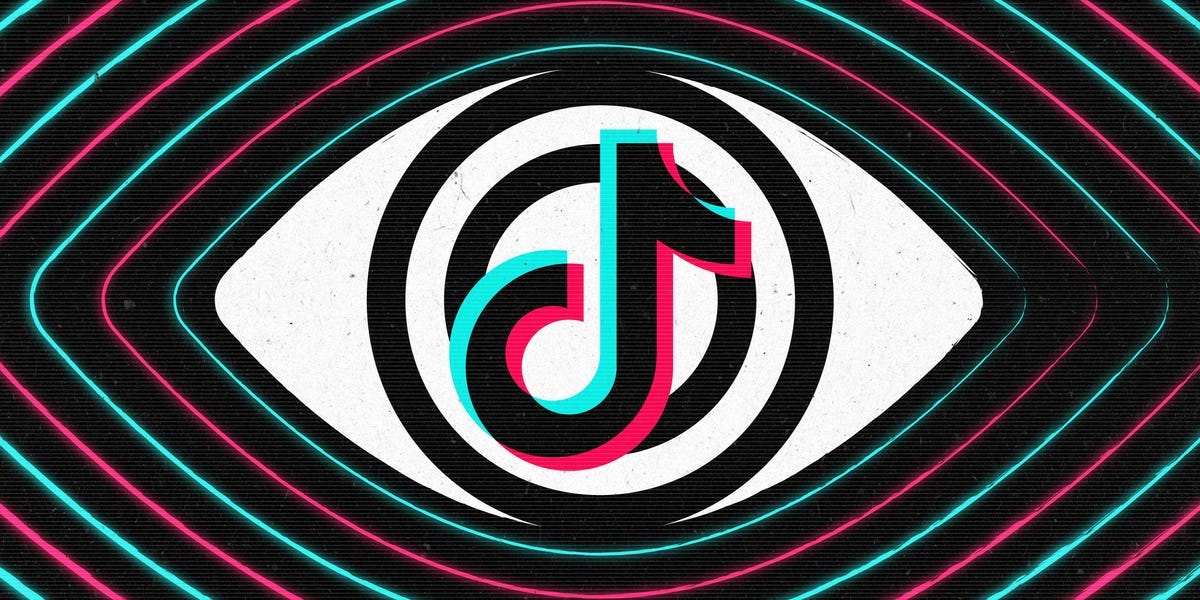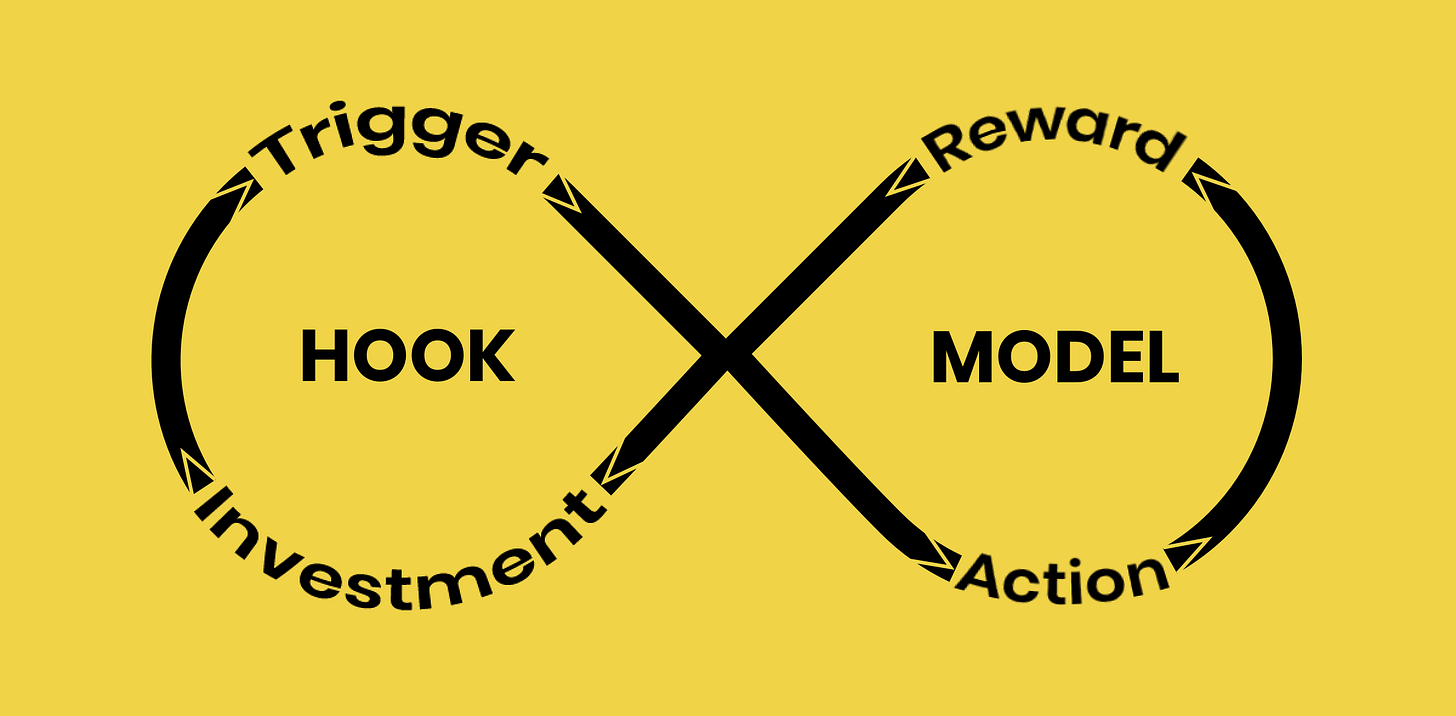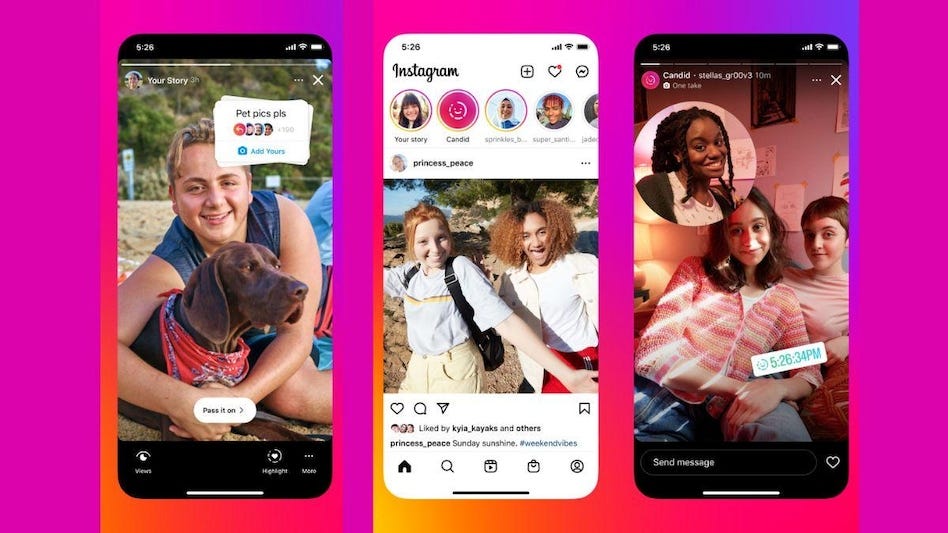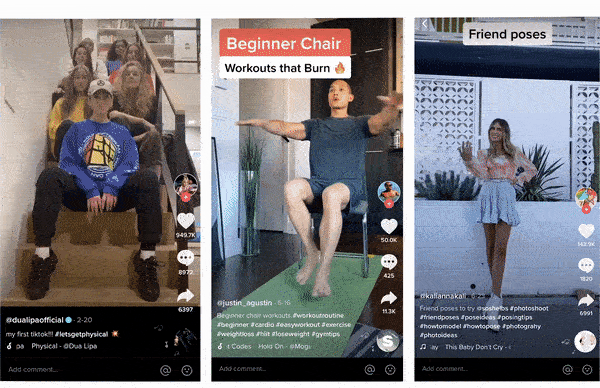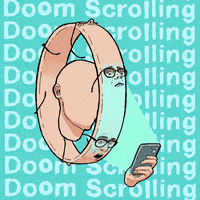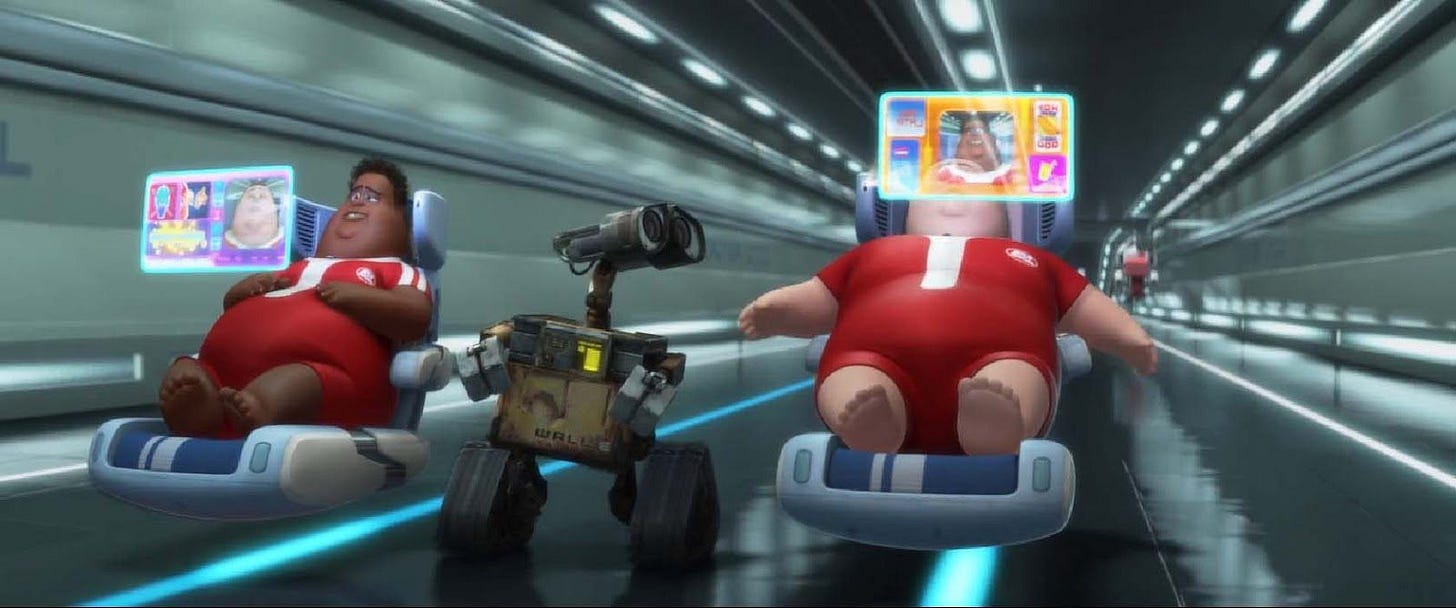TikTok: the "DARK" side of Product Design
Where is the line between sharp UX and user manipulation? Coupled that with targeting the loneliness user persona, its dangerous to the public.
It all started as an educational app called Cicada.
Louis Yang and Alex Zhu launched Cicada because they wanted people to “learn new things” just from their mobile phones.
However this idea was quickly showing signs of failure, and they were burning a lot of cash. Since not too many people were skilled enough to explain contents within 3-5 minutes, hence the number of User Generated Content (UGC) was getting lower and lower.
So they launched Musical.ly in 2014, where people can create “15 second videos” within minutes by “lip-syncing” with famous audios or music.
IT WENT VIRAL AND PEOPLE WERE HOOKED!
The numbers speak for themselves:
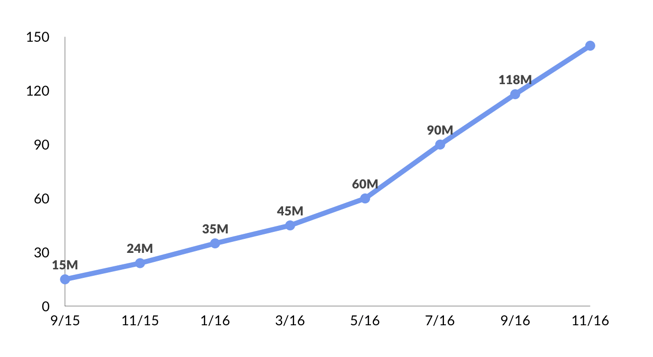
With over 133M registered users and 40 million MAU, and an estimated $500M valuation at that time, Musical.ly dominated the industry!
On the other side there was a Chinese internet technology company called Bytedance, who created an app called “Douyin”, however they failed to attract and retain both users and content creators. When Musical.ly started to make waves, Bytedance saw this opportunity, acquired it, and merged it with Douyin.
During 2017, no one knew of the effect, this newly merged company was going to have on its audience, creators, and the tech world.
Well even its users right now don’t realize that they are under the app’s manipulation.
This is the story of TikTok, the dark side of it.
🪝Product design that ‘hooks’ you in
To set the basics first, lets look at this:
Do you find yourself using Instagram every day after you wake up? Or glance through your X (Twitter) feed? Do you find yourself binge watch the next episode of your favorite series in Netflix? Or do you just lose track of time in TikTok?
If any of this is true or if you feel similar effect from another app, then it means you are hooked just by those lines of code!
The HOOK model
Nir Eyal, a behavioral economist is the founding father of the hook model, found out that economic values of companies is just a function of the strength of habits they create for a product.
This is the model:
As the author explains in his article, ‘The Hooked Model is a way of describing a user’s interactions with a product as they pass through four phases: a trigger to begin using the product, an action to satisfy the trigger, a variable reward for the action, and some type of investment that, ultimately, makes the product more valuable to the user’.
#1 Trigger Phase
These could be external or internal triggers like app notifications, app icons, FOMO, Boredom etc., which nudges or cues your habit.
For example, whenever there is boredom, users usually search for Instagram or Facebook.
#2 Action Phase
The action which the designer intended will come after the trigger. To increase the odds of the user taking the intended action, the designer makes the flow as seamless as possible while also increasing the user’s motivation.
Extending the previous example, the user opens the app, looks at content which interests them the most, and engages with the posts, videos, stories, messages etc. all within the platform.
#3 Variable Reward Phase
Every time you open a fridge you know that the light automatically gets ON. So you get used to that very easily.
But, what if every time you open it, you get your a variety of dessert! This automatically intrigues you to open the fridge again and again, because of the Dopamine Surge that you get, when the brain is expecting a reward.
With the same example of Instagram, after watching the algorithmic content and replying to our messages, the dopamine hit reduces our boredom. The amount of dopamine hit we get is the intrigue that the user feels.
Slot machines and lottery tickets are also one some other examples.
#4 Investment Phase
At this point, the user is swimming in all that dopamine, so its the perfect time to make them take some action for the application.
At this point there are “two paths” to a user.
First path is where they can go through the loop once again (Trigger → Action → Variable reward → Investment), before coming here again. Second path is where we ask the user to do something for us, that benefits the user, as well as benefits the company. Sort of like a feedback to the system.
These investments can be leveraged to make the trigger more engaging, the action easier, and the reward more exciting with every pass through the Hook.
For example, uploading a new picture, inviting your friends etc. are investments which the users feel towards Instagram.
As a company if all of these four are in check, then congratulations! You have a habit forming product.
If used for good, habits can enhance people’s lives with entertaining and even healthful routines. If used to exploit, habits can turn into wasteful addictions.
Now lets see how TikTok exploited our habits.
🔁TikTok’s Habit loop
Now we have a basic idea of what a habit loop is.
In short, you get a external or internal “trigger” to take “action” and use the product, where you get your dopamine hit! This “variable reward” nudges you to “invest” for the application through an effort from your side, which in turn connects the trigger phase as well.
Trigger Phase in TikTok
There are two main user personas in TikTok: Viewers and Creators.
For a viewer, the external trigger is the word of mouth factor especially among teenagers and young adults. The internal trigger is boredom, depression, sadness etc. - basically anything that gets a validation kick!
For a creator, the trigger is to create content until it becomes viral and become a TikTok celebrity! They simply want to showcase their talent to make hyper-viral content.
Action Phase in TikTok
This is where the product design simplifies the UI/UX so that there is insignificant friction for the user while using the app.
As you know, the TikTok videos are aggregated in a news-feed vertical format structure where you can just swipe up or down, to see the next or previous video respectively.
Interaction with the post is as simple as the number of seconds you watch a particular video.
If you engage with it, with a like, comment, or share, then it signals the algorithm to show more of those kind of videos.
Variable Reward Phase in TikTok
A hook’s ability is to create a wanting for more.
As we saw earlier with the fridge example, Predictable feedback loops don’t create desire among users. Novelty keeps us hooked.
Explaining two terms here before we go further:
Lower Pleasures: Things that provide us with instant gratification comes under this category. It gives us a instant dopamine boost, which makes us feel very good! Food, alcohol, sex etc. are few of the examples.
Higher Pleasures: These are things which brings more value to ourselves and our lives. Love, emotion, connection, belongingness etc. comes under this category.
In TikTok’s case, since the effort required from the user’s end is very insignificant (just a swipe up/down), the craving for more and more dopamine hit is also staggering. Users can endlessly scroll (because its very simple) and keep on satisfying the ‘lower pleasures’ in life.
The sad part is we don’t realize this yet!
In the end, we just end up “doom scrolling” for hours, and we can’t even look away!
Investment Phase in TikTok
So as you doom scroll in TikTok, you would start to do the following:
Follow you favorite creators because you love their content
Interacting with videos that you gives you a good dopamine boost
Sharing TikToks with your friends and to other socials
Creating TikToks of yourself or with other people to get more validation
Even if we don’t admit to these things right now, we unconsciously do these. We give our own behavioral data to the algorithm, and it personalizes our feed in a way that we don’t leave it easily.
So slowly it turns into an app that cures our boredom, sadness, FOMO, etc., and in the end, becoming the easiest app to get instant dopamine.
🙃Where’s the behavioral manipulation?
There are many instances of our brains being slowly adjusted to lower pleasures and these are as follows:
#1 Death of Attention Lifespan
Short video format has reduced your attention lifespan. As a content creator it makes a lot of sense, because they have to do things that are different just to catch the attention of the viewers.
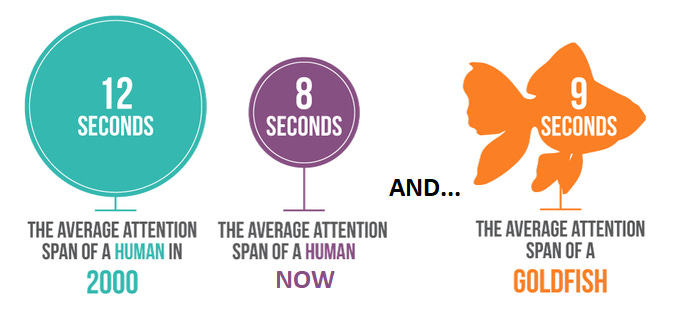
A study done by Infosys details how our attention lifespan is reduced by 68.7%, with Gen-Z having only 8 seconds.
We won’t be able to sit for the entire 2 to 3 hours for movies because a TikTok could give a better emotional hit than watching the entire movie.
#2 Easy scrolling
This has made the hunt for dopamine really simple with very insignificant effort from our side. Since the videos are also shorter, we can easily find the ones which we love at a faster rate.
You know what!
People working at TikTok feels like this scrolling is also a painpoint to the users, so they brought a new feature called “Auto Scrolling”, where you can just point your phone to yourself and enjoy the TikToks like a technology slave.

#3 Our emotions switches at a faster pace like never before
When we are watching a movie or a long form content, we take some time to get immersed into the video, and in this case our there is not much load to our brain.
However when you are watching a short form content for 30 minutes straight, with each video having an runtime of 15-30 seconds, then you are watching at least 60 to 120 videos!

Your emotions are switched at a fast pace like never before, and even research shows us how this affects our mental health!
#4 Hooked with Intermittent reinforcement
Whenever we have a subject doing a particular task, the intrigue of having a variable reward at anytime motivates them to do that task better and better.
This is Intermittent reinforcement, where in TikTok giving dopamine surge at irregular intervals manipulates the users to get stuck into wanting more. Look at this simple graph below and it’ll be more clear to you:
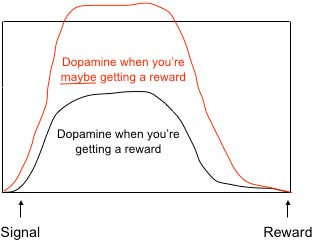
However what most people don’t realize is that TikTok is an app where “Artificial Intelligence is the product!”
With the amount of behavioral data they have, they can easily manipulate us with the information they seem the public should know.
Even though there is AI in the background which understands your likes and dislikes more than you know yourself, they want you to get into Intermittent reinforcement loop.
⚠️WALL-E tried to warn us
The movie WALL-E shows us how too much reliance on technology can lead to problems.
People in the movie became “too focused on screens” and lost meaningful connections with others.
TikTok and similar apps can also make us overly absorbed in digital content, disconnecting us from the real world. As users, we need to be aware of how these apps keep us hooked. Understanding this can help us make better choices about how we use these platforms. While apps like TikTok can be fun and creative, we must remember to balance the benefits of technology with its potential risks.
Just like WALL-E teaches us about the “value of human connection”, we should think about how technology fits into our lives and ensure it enhances rather than takes away from our experiences. By being responsible users, we can create a future where technology and human existence coexist harmoniously.
"In a world mesmerized by screens, let us remember the beauty of human connection, for it is in those moments that we truly come alive." - WALL-E


